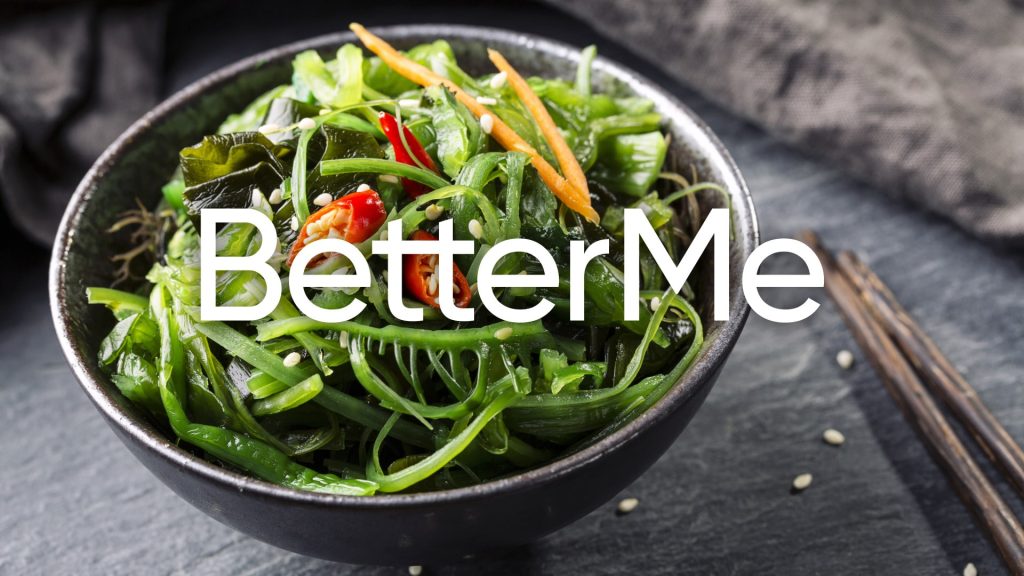Cruciferous vegetables have gained popularity over the years due to their low calories. Thanks to them, dieters have an easier time maintaining a calorie deficit for weight loss. Broccoli, cabbage, bok choy, Brussels sprouts, collard greens, turnips, kale, and rutabaga are the most common cruciferous vegetables. Of all these, collard greens have stolen the attention of most dieters due to their nutritional content. They are packed with vitamins, antioxidants, minerals, and fiber, which help with significant body roles. In this read, we will look at these nutrients in specific servings. Similarly, we will also discuss collard greens’ benefits and side effects. Let us get started!
Get your personalized
meal plan!
What Are Collard Greens?
These are leafy green vegetables that are members of the Brassica, just like broccoli, cabbage, mustard greens, and kale (3). They are native to North America and a staple in Southern American cuisine. However, they are also common in other parts of the world.
The number of collard greens’ calories will vary depending on if they are raw or cooked, because they reduce in volume when cooked. Let us look at raw and boiled collard greens’ nutrition to better understand the differences.
According to the U.S. Department of Agriculture (USDA), a 100 g serving of raw collard greens provide the following nutrients (2):
- Calories: 35
- Total fat: 0 g
- Total carbohydrates: 5.88 g (not including 3.5 g of fiber)
- Protein: 2.35 g
If you are measuring your greens using cups, a cup of fresh collard greens will provide you with the following nutrients (3):
- Calories: 11
- Protein: 1 g
- Total carbohydrates: 2 g
- Fat: less than 1 g
If it is boiled, a cup serving of these vegetables provides the following nutrients (4):
- Calories: 63
- Total fat: 1.37 g
- Total carbohydrates: 10.73 g (inclusive of 7.6 g of fiber and a minimum of 1 g of sugar)
- Protein: 5.15 g
However, these are not the only nutrients found in these vegetables.
Collard greens also contain:
- Fiber
- Antioxidants
- Calcium
- Potassium
- Phosphorus
- Iron
- Magnesium
- Zinc
- Sodium
- Folate
- Choline
- Thiamin
- Pantothenic Acid
- Niacin
- Vitamins A, C, K, B-6, and E
Read More: Benefits Of Super Greens: 11 Reasons To Include Them In Your Diet
Benefits Of Collard Greens
Collard greens are linked to several health benefits due to their richness in vitamins, fiber, antioxidants, and minerals.
Some of these benefits include:
Better Bone Health
You are at higher risk of bone fracture and osteoporosis if you do not get enough vitamin K. The 2015-2020 United States Dietary Guidelines suggest that women between 19 and 30 years old consume 90 mcg of vitamin K daily (4). Men in the same age group should target 120 mcg every day (4).
So, if you do not consume vitamin K amounting to these limits, you are more likely to have less than ideal bone mineralization. A cup of collard greens provides 770 mcg of this vitamin. It is enough to modify bone matrix proteins, enhance calcium absorption, and reduce urinary calcium excretion (4).
Reduced Cancer Risk
Science also shows that these cruciferous vegetables have anti-cancer properties that may help prevent cancers of the upper digestive tract, pancreas, breast, kidney, and colorectal (4). In 2002, researchers found support for the hypothesis that brassica vegetables, including collard greens, broccoli, bok choy, cabbage, and mustard greens could reduce prostate cancer risk (1).
However, Medical News Today studies suggest that some cooking methods could reduce these anti-cancerous properties. It is argued that in some cases cooking reduces the glucosinolates levels that are important for the benefit of reduced cancer risk (4).
Disease Prevention
Besides reducing cancer risk, collard greens may also help prevent several diseases. This is because they are packed with antioxidants, which neutralize the effects of free radicals in your body. Free radicals can cause oxidative stress, which is associated with conditions such as diabetes, obesity, and heart disease (3).
Diabetes Management
Medical News Today also acknowledges that consuming collard greens could help people with type 2 diabetes better manage their condition (4). These greens are believed to help with this in several ways.
They include:
-
Stabilizing Blood Sugar
Medical News Today reveals that these cruciferous vegetables may help improve blood sugar levels, blood lipids, and insulin levels in the body (4). Any imbalance in these factors, for example, high blood glucose levels or hyperglycemia, is linked with increased risk of complications from diabetes.
-
High Fiber Content
Similarly, researchers also believe that these vegetables could help with diabetes management due to their high fiber content. According to the U.S. Department of Agriculture (USDA), a 100 g serving of collard greens provides 3.5 g of fiber (2). When boiled, a cup of these vegetables could provide you with almost 8 g of fiber (4).
The Dietary Guidelines for Americans suggest that women consume 22.4 g to 28 g of fiber in a day. On the other hand, men should consume between 28 g and 33.6 g every day (1). Your age will influence the exact serving. Consuming collard greens helps you meet a decent fraction of the required fiber requirements.
-
Antioxidant Properties
Additionally, researchers believe these greens could help diabetes management because they have an antioxidant called alpha-lipoic acid. Alpha-lipoic acid (ALA) may help reduce blood glucose levels, prevent insulin resistance, and avoid changes resulting from oxidative stress. All these are risk factors in people with diabetes (4).
However, there have been several debates about the effectiveness of ALA as a long-term treatment for diabetes. Excessively high doses of oral supplementation have been shown to have adverse effects similar to if consumed in too little amounts. In addition, it has been linked to cell damage, which has made researchers suggest further studies to determine its efficacy (4).
Want to build an attention-grabbing bubble butt, blast away fat that’s stored in all the wrong places, spring-clean your diet, turn back the clock on your skin, skyrocket your self-confidence and shatter your insecurities? Check out the BetterMe app and set this plan in motion!
Prevention Of Birth Defects
Dark leafy vegetables like collard greens are a staple in any pregnant woman’s diet. This is because they are among the best natural sources of folate (3). Folate is a vital nutrient in pregnant women and small children because it helps with the body’s growth and neural tube development (3).
It also helps prevent congenital abnormalities like spina bifida (3). In light of this, doctors recommend that women planning or getting pregnant consume at least 400 mcg of folate daily (3).
Improved Digestion
Collard greens also improve digestion due to their high water and fiber content. Water helps in softening your stool, which prevents constipation. Likewise, high fiber content also prevents constipation and helps maintain a healthy digestive tract (4).
Improved Immune Function
Adding collard greens to your diet can also help support your immune functioning. According to WebMD, these cruciferous vegetables are rich in vitamins A and C, vital for a healthy immune system (3).
Vitamin C in these greens helps keep your blood cells healthy, while vitamin A is crucial for forming healthy T cells (3). T cells are responsible for attacking any foreign viruses and bacteria in your body.
Healthy Hair And Skin
Consuming collard greens can also help you develop healthy hair and skin due to their high vitamin A content. Vitamin A helps in sebum production, which helps keep your hair moisturized (4).
Additionally, it is also vital for the growth of healthy body tissues, including those of the skin and hair (4). Similarly, these greens enhance skin and hair health due to their vitamin C content. This vitamin allows your body to build and maintain healthy collagen levels that structure your hair and skin (4).
These examples of brassica vegetables also promote good skin and hair health due to their iron content. Of course, you need to have enough iron in your body to prevent anemia, which is commonly linked to hair loss (4).
Read More: Green Leafy Vegetables: 8 Nutritious Veggies You Should Eat More Often
Improving Sleep And Mood
Eating collard greens may also improve your mood and sleep quality because they contain choline. According to Medical News Today, choline is a vital neurotransmitter that helps with muscle movement, memory functions, sleep, mood, and learning (4).
Choline also helps with fat absorption, reducing chronic inflammation, transmitting nerve impulses, and maintaining the cellular membrane structure (4).
The vegetables can also improve your mood because they provide folate. Food experts argue that folate present in collard greens helps reduce depression risk by preventing the formation of too much homocysteine in your body (4). In addition, researchers have discovered that high levels of homocysteine in individuals with depression and bipolar disorder are linked to alcohol use disorder.
Packed With Potassium
Collard greens are also rich in potassium, crucial for several body roles. For example, it helps regulate your heartbeat, balance fluid and electrolytes in your body, and help with muscle contraction (3).
Side Effects Of Collard Greens
Although they have numerous health benefits, food experts also reveal they have several drawbacks.
Some of them include (4):
Drug Interactions
Unfortunately, consuming collard greens may interact with blood-thinners like warfarin and Coumadin. In addition, they are rich in vitamin K, which plays a significant role in blood clotting. So, it would help if you did not suddenly increase or decrease the consumption of foods rich in this vitamin while on blood thinners. Work with your doctor and dietitian to help you achieve the right balance.
Digestive Problems
There is always a temptation of overeating these greens, especially after seeing the many health benefits you could reap. However, you are advised to consume these greens in moderation due to their high fiber content.
Remember that your body takes longer to digest fiber. So when you overeat, you could experience gas or bloat, especially if you are not used to a lot of fiber (3). Food experts recommend eating no more than two cups of collard greens in one setting (3). When increasing your fiber intake, do so gradually and make sure you are also drinking plenty of fluids.
When it comes to weight loss, progress is made by inches, not miles, so it’s much harder to track and a lot easier to give up. BetterMe app is your personal trainer, nutritionist and support system all in one. Start using our app to stay on track and hold yourself accountable!
Can I Eat Collard Greens Every Day?
Despite the long list of health benefits associated with collard greens, you are advised not to have them daily. As seen from our discussion above, too much of them can lead to bloating and gas. So, food experts recommend you not to eat these greens daily but instead interchange them with some other vegetables like cabbage.
It is better to talk to your nutritionist for better insight on the right collard greens serving depending on your goals.
How To Prepare Collard Greens?
Before we proceed to the preparation methods, let us remind you that your cooking method affects the collard greens’ calories. Some methods may make the greens have higher calories due to other factors, such as extra ingredients if you have them in a soup.
So, we urge you to sit down with your nutritionist and go through the best preparation methods, depending on your goals. Opt for methods like boiling or steaming if your goal is to shed pounds. But, again, pay attention to your preferences.
Some people enjoy a stiff texture with their cruciferous vegetables. However, some like to have them soft. Be sure to let your nutritionist know or research the best preparation method for your preferences.
Because collard greens are versatile vegetables, there are several ways you can prepare them.
Some of the most common methods include (3):
- Preparing collard green chips using extra-virgin olive oil;
- Adding a handful of these cruciferous vegetables to your smoothie;
- Adding them to brown rice and black-eyed peas for delicious and flavorful cuisine;
- Sautéing them in fresh onion and garlic in extra-virgin olive oil and having them as a side dish;
- Eating them raw in salads, wraps, or sandwiches;
- Including them in soup;
- Preparing a collard green puree and making pesto; and
- Chopping and adding chili to them.
What Are The Methods To Avoid (3)?
- Frying collard greens in bacon fat as they result in a bitter and robust sulfur taste and
- Overcooking them.
You can get rid of the bitterness in these greens by adding a teaspoon of salt or lemon juice. Then, you can repeat as required until the bitterness is all gone. Note that these are a few of the many examples of preparing collard greens.
Instead, they should not limit you but help broaden your creative abilities in the kitchen. Even so, remember to proceed carefully and consult your doctor and nutritionist, especially if you have a medical condition, are on medications, or want to lose weight.
The Bottom Line
Collard greens are classified as brassica or cruciferous vegetables alongside broccoli, cabbage, Brussels sprouts, and bok choy. The collard greens calories vary depending on your preparation method.
They have few calories when eaten raw and if taken in soups, boiled, or smoothies. However, be sure to use other low-calorie ingredients if you are on a weight loss diet plan. Similarly, get professional help before adding these greens to your meal plan, and talk to your doctor if you are on blood thinning medications.
DISCLAIMER:
This article is intended for general informational purposes only and does not serve to address individual circumstances. It is not a substitute for professional advice or help and should not be relied on for making any kind of decision-making. Any action taken as a direct or indirect result of the information in this article is entirely at your own risk and is your sole responsibility.
BetterMe, its content staff, and its medical advisors accept no responsibility for inaccuracies, errors, misstatements, inconsistencies, or omissions and specifically disclaim any liability, loss or risk, personal, professional or otherwise, which may be incurred as a consequence, directly or indirectly, of the use and/or application of any content.
You should always seek the advice of your physician or other qualified health provider with any questions you may have regarding a medical condition or your specific situation. Never disregard professional medical advice or delay seeking it because of BetterMe content. If you suspect or think you may have a medical emergency, call your doctor.
SOURCES:
- Brassica vegetables and prostate cancer risk: a review of the epidemiological evidence (2002, pubmed.ncbi.nlm.nih.gov)
- Collard Greens (2019, fdc.nal.usda.gov)
- Health Benefits of Collard Greens (2020, webmd.com)
- Why you should eat your collard greens (2018, medicalnewstoday.com)













